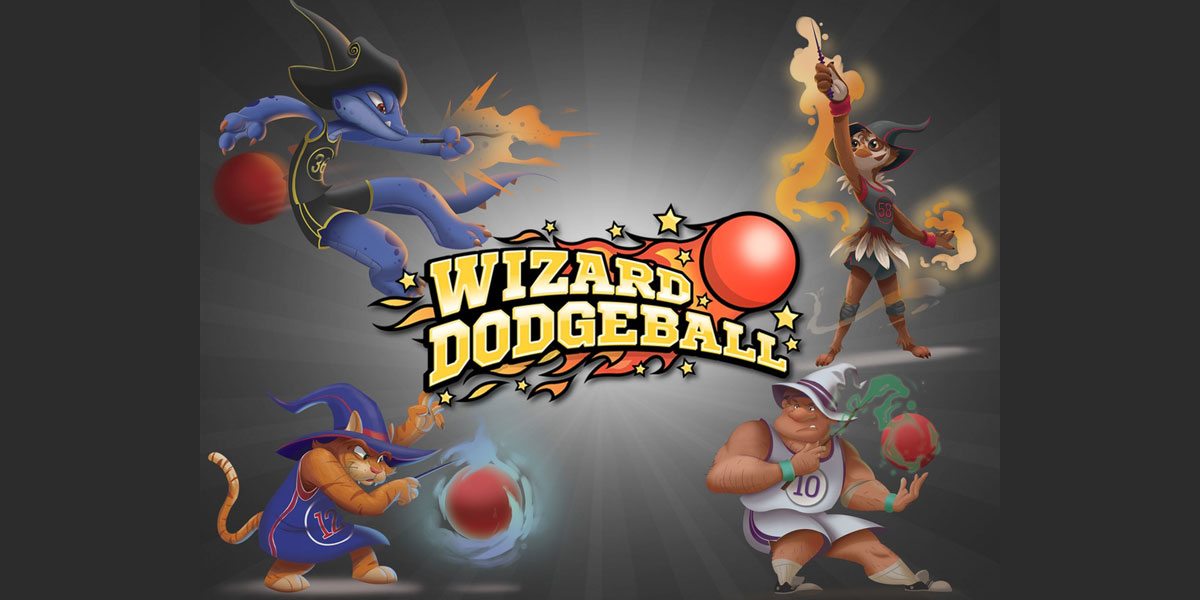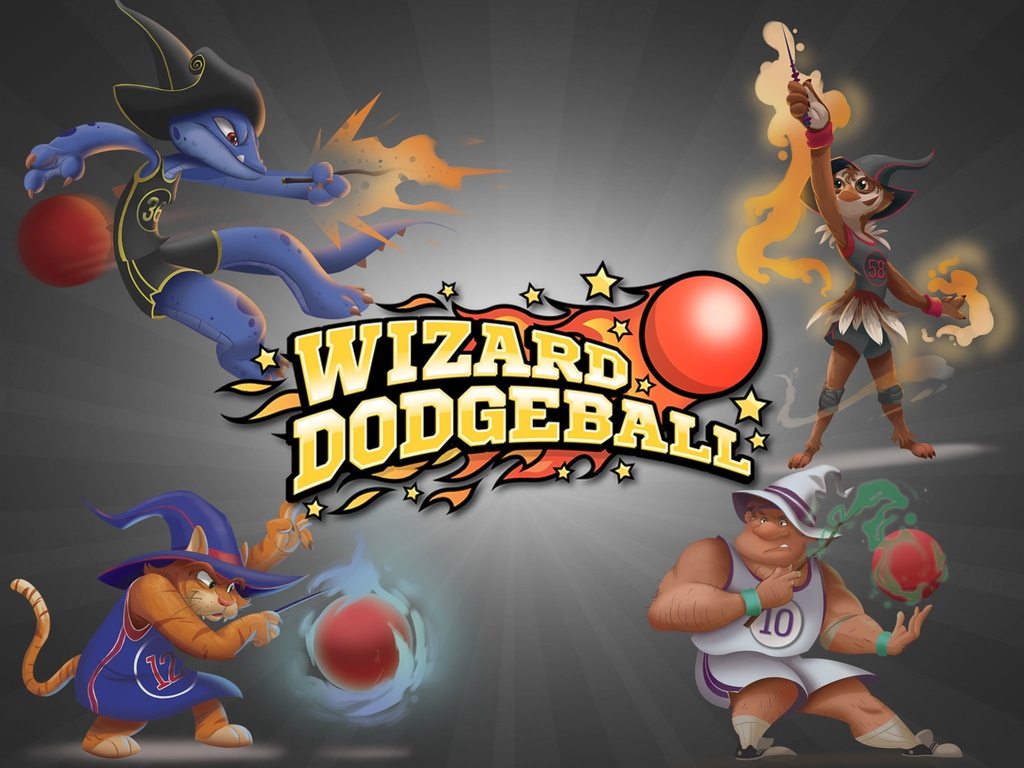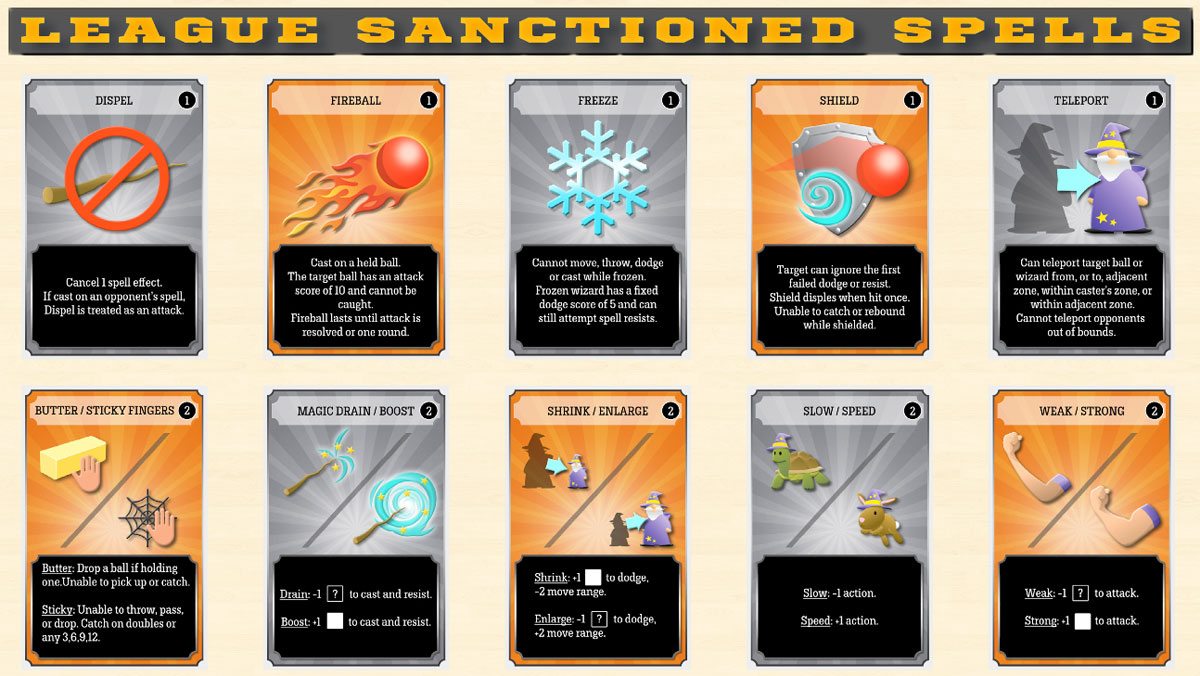Table for Two is a series focusing on board games designed for two players. Today’s game: Wizard Dodgeball! Draft your team, stretch your legs, and warm up your wands. You’ll need to use speed, strength, and spells to defeat the other team.
At a glance: Wizard Dodgeball is a tactical game for 2 players, ages 8 and up, and takes about 30 minutes to play. It is currently seeking funding on Kickstarter, with a pledge level of $35 for a copy of the game. ($10 gets you access to the print and play with the final artwork.)
New to Kickstarter? Check out our crowdfunding primer.
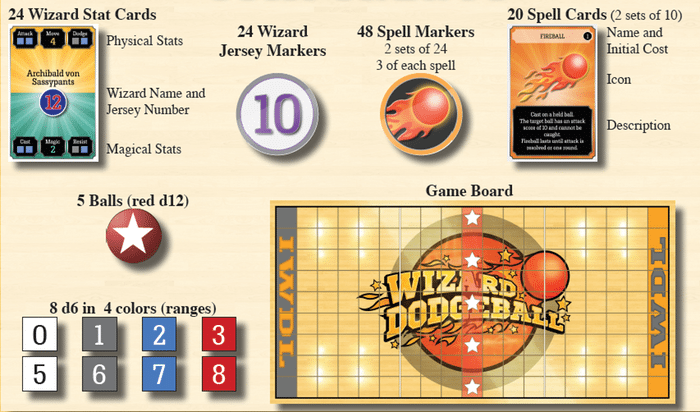
Components:
- 24 Wizard cards
- 24 Wizard tokens
- 48 Spell Marker tokens
- 20 Spell cards
- 5 Balls (red 12-sided dice)
- 8 six-sided dice
- 1 game board
The game’s visuals have undergone some evolution (as you can see on the Kickstarter page); the prototype I tried doesn’t show the final artwork, but it functions pretty well. The actual wizard cards will be fully illustrated, with the dice shown at the bottom of each card.
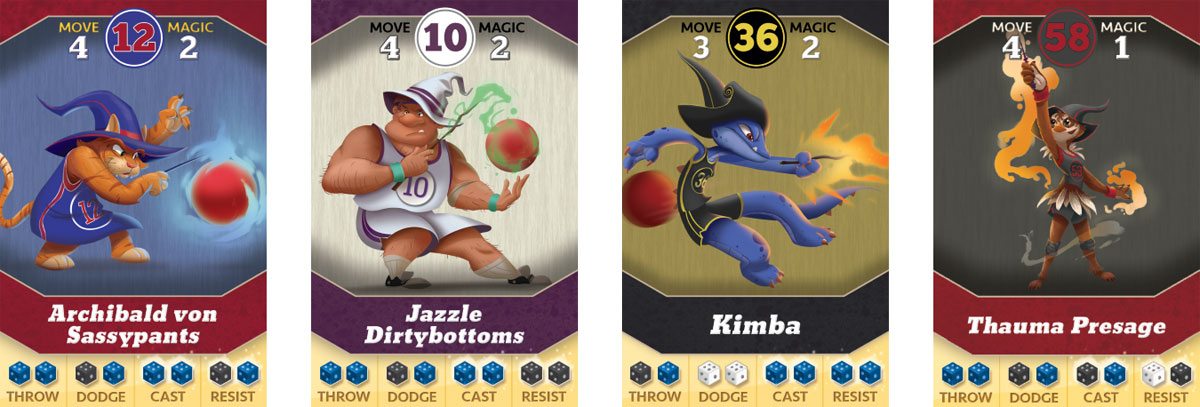
The 12-sided dice are just used as the balls–there will be a star on one side that simply marks whether the ball is active yet or not. Honestly, the game would function just as well with a two-sided token, but the d12 is a cute touch.
The six-sided dice are used for everything else: throwing and dodging balls, casting and resisting spells. The dice have different ranges: white dice go from 0 to 5, and the red dice go from 3 to 8. Each wizard has two dice for each skill, but the colors of the dice will influence how well they can perform.
The Wizard Jersey markers are simply tokens that are used to mark each wizard’s location on the board, and the spell markers show which wizards are affected by spells.
Since the prototype I played is unfinished, I can’t speak to the final component quality, but the design is fairly straightforward. It was easy to understand the wizard cards, and most of the spell cards are also simple to implement. There were some cases that we weren’t quite sure about, and I hope those get cleared up in the rulebook before final printing.
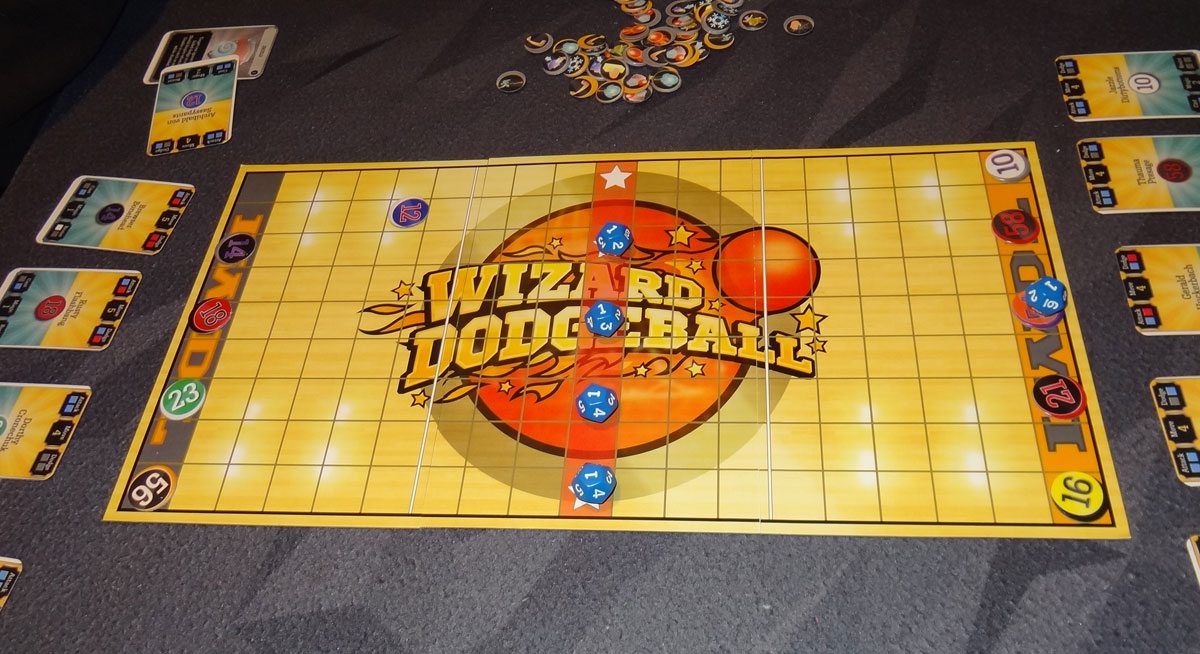
How to play
The rulebook is available here as a PDF.
The goal of the game is to score 5 points–either by hitting opponents with a ball or by catching a ball thrown by an opponent.
To set up, the five balls are set up in the center of the field in the neutral zone, with the star facing down. As soon as a ball is picked up and carried behind the white line, it is activated and can now be thrown at an opponent. An activated ball remains active for the rest of the game.

Players take turns drafting teams of 5 wizards (or, for a quick start, just deal five to each player at random). You then line up your team in the order you’d like to activate them–again, the first time you play, you may just put these down randomly. Then you can assemble your spell books–you total up the magic points on your team, and then spend them to put spells into your hand. (For a quick start, you just take all the spells of your color.)
On each turn, you activate the next wizard in line, and you get to move, throw, and cast a spell. Movement is simple: move up to the number of spaces indicated by the wizard’s move stat. To throw to another teammate, you just have to have line of sight and you transfer the ball. To throw at an opponent, you must have line of sight, and you’ll roll your throw dice, with better odds the closer you are to them. They must then try to dodge by rolling their dodge dice to meet or beat your throw number. If they roll doubles, then they caught the ball and you’re out–plus they get to bring back one of their eliminated teammates, if any. If they miss the dodge, they get hit and are out.
You can cast spells on balls and your teammates without rolling dice, but if you try to cast a spell on an opponent, you’ll roll your cast dice and the target will roll resist dice. This time, doubles causes the spell to rebound onto the caster. There are 10 different spells to choose from, and some of them have two effects to choose from, like Magic Drain/Boost–either boost your own players or drain the opponent’s players.
Players take turns until somebody scores 5 points.
There are some variants–if you play without elimination, you can bring in a player on their next turn but they lose their movement. You can on teams if you have more than two players. Also, in the advanced rules, each wizard gets two actions per turn, and can choose between move, throw, and spell (including doing the same action twice).
The Verdict
Ah, dodgeball. A game that doesn’t generally lead to permanent physical injuries but may leave emotional scars well into adulthood. At least, so I’ve been told. Fortunately, this version of dodgeball is much less likely to cause physical pain or extreme embarrassment.
Wizard Dodgeball is a light tactical game, and it’s like a war game except, you know, friendlier. You know all of your opponent’s wizards and what they have up their sleeves, and the trick is figuring out how to position your players and choose your spells for the best effect. Some wizards are better at the physical actions (throwing and dodging) and some are better at magic (casting and resisting). When you’ve got a chance to throw a ball, you’ll have to decide whether to take out the wizard with the strong arm (who has a good chance of dodging) or the one with a fast wand (who will probably trip over some robes).
Because the game uses line of sight, you can also hide some players behind others, hoping to get another turn to pop out and cast some spells. Many of the spells can be used to boost your own players or curse the other players, and that’s not always an easy call. I like, for instance, that shrinking a player makes them harder to hit but also slower on the field–will that help you or harm you?
So far I’ve mostly played by the basic rules without actually drafting because I’ve been teaching new players, and it can be overwhelming at first to figure out what will make a good team. But I can see that after a few plays you have a better idea of whether you want to focus on physical, magical, or a balance of both–and then in what order to put your wizards so that they can assist each other. It’s a bit hard to really see that the first time through, and the game feels fairly light, but I can see that there’s more beneath the surface.
Of course, there’s always that element of luck, too. Just because you’re rolling red and blue dice against somebody with only white dice to dodge doesn’t mean you’ve got a guaranteed hit. Sure, you may roll a number that’s impossible for them to match, but they’ve always got a chance to roll doubles and eliminate you on your own throw. In the context of the game, it feels like an amazing catch or an unbelievable spell rebound whenever that happens.
Overall, I think Wizard Dodgeball is a fast-paced game that can offer just a nice casual battle or somewhat deeper tactics. It’s not extremely heavy, even using the advanced rules, so it is still suitable for kids and players who don’t have much experience with tactical games, and I think the theme is pretty easy to grasp. I haven’t played it with teammates but I do think it’s the sort of game that lends itself to two players, and playing with more may lead to one player per team really running the show.
If you like two-player games and are looking for a light-to-medium tactical game, Wizard Dodgeball is worth checking out. For more information, visit the Kickstarter page. The campaign ends March 24.
